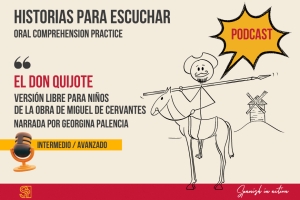If you like animals, this article is for you. But it is also the case if you want to know about the set phrases used in popular culture.
Those phrases in Spanish are called idioms and also, if they are more elaborated, sayings. Many of them have their equivalents in other languages. However, the vocabulary, the structure, and even the similes may be different. It is the best value we see for you to learn them. You will see.
When you learn these phrases and sayings, it will be useful only if:
– You reflect on the cultural imagery they express.
-You pay attention to the vocabulary, the structures, and the image of meaning that they convey.
We will make you a preamble to this first use, and then we will give you some set phrases so you can start practicing.
How is it that these phrases pass from one culture to another?
1) through the borrowing phenomena of the contact between languages and cultures;
2) by the oral and written dissemination of great works such as the Bible and the classics;
3) according to the theory of “parallel development” expressions would have sprung up simultaneously in all societies reflecting the universality of human experiences.
At some point in history, phrases were learned by connected individuals. They constitute a trait of identification as members of the same cultural world.
Those phrases share issues of friendship, love, work, good or bad administration, family relationships, environmental conditions, gastronomy, etc., and they do so with the desire to demonstrate popular wisdom.
Many times they are phrases that link societies about what they think about individuals. Each country uses its images to capture that same reality. Even if they share the same language.
We wonder if young people still use these types of resources to relate. The truth is that we do not know if they are used the same as before. We see that new phrases and sayings are related to new technologies. It seems that they will continue to be created and transmitted from generation to generation as long as their messages continue to share human behavior knowledge.
Language and popular culture are living and dynamic facts. They are a mixture of the heritage and the manifestations of today.
All oral and written expressions are products of that culture, recorded in the language: stories and legends, songs, and also this topic of today: phrases and sayings. All convey knowledge, beliefs, significance, and produce and reproduce social definitions, ways of thinking and acting, roles, and stereotypes.
The sayings are, according to the Dictionary of the Royal Spanish Academy: “Acute and sententious saying in common use.”
Most of the time with a certain rhythm. In addition to its figurative sense, it makes them easier to remember.
Why are they so useful for expressing ideas across generations?
They are like a manual for life itself.
- objectify subjective experiences,
- configure, reproduce, readapt or change beliefs,
- induce behaviors,
- make judgments,
- they point out paths to follow,
- they prescribe what to think, think, feel, do.
They advise, recommend, describe, evidence, explain, interpret, prescribe, persuade, guide, seduce, coerce, intimidate, etc.
We return to the question of this article: Is it crucial to learn the sayings in Spanish? Our answer is not a bit vague. We know that.
You do not need them to communicate your intentions, feelings, or requests. However, they could help you to acquire vocabulary. Understand sentence strategies. Compare the forms of synthesis between your language with Spanish. Besides, you can play with them by making yourself a repertoire of cultural knowledge, knowing a little more about the ways of thinking of native speakers to the language you are learning.
Having reflected a little on these resources, we give you here bases of phrases built with animals. Now you can start your practice.
See what animal traits people sometimes have in Spanish. Analyze the bases, create a sentence for each one, and put these expressions into practice in your Spanish classes.
Oh, and enjoy. Remember that playing live is tastier.
- Having BIRDS in his head – Being a delusional idealist – That boy has many birds in his head.
- Give CAT for HARE – Cheat or cheat
- Being in a DOG mood – Being angry
- To be like a GOAT – To be crazy
- Being like a SEAL / COW Being fat
- Being in the age of TURKEY – Being a teenager
- Being like a FISH in the water – Feeling very comfortable in that place or environment
- To be made a BULL – To be very strong
- To be four CATS – To be very few
- Being the black SHEEP – Being a different person who is not appreciated
- Be slower than a TURTLE – Be very slow
- Be a HEN – Be a coward
- Being a COCK – Acting in a pushy way
- Be a LYNX – Be very clever
- Be a fat FISH – Be powerful
- Be a bookworm MOUSE – Be very studious
Bye!



